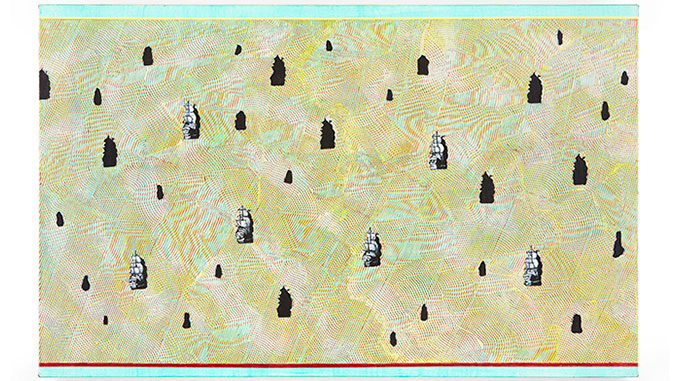 In a partnership between Monash University Museum of Art (MUMA) and the Museum of Contemporary Art Australia (MCA), the survey exhibition, Vivienne Binns: On and through the surface will open at MUMA on Saturday 5 February, before going on display at MCA from 15 July 2022.
In a partnership between Monash University Museum of Art (MUMA) and the Museum of Contemporary Art Australia (MCA), the survey exhibition, Vivienne Binns: On and through the surface will open at MUMA on Saturday 5 February, before going on display at MCA from 15 July 2022.
Vivienne Binns is one of Australia’s most significant artists. Since the 1960s, her ground-breaking work has played an important role in the evolution of feminist, collaborative, community-based and studio practice.
Covering six decades of Binns’s practice, it will bring together over one hundred key works spanning painting, drawing, assemblage and collaborative projects, loaned from public and private collections as well as the artist.
Among the many highlights will be Binns’s painting The aftermath and the ikon of fear, 1984–85, which was recently co-acquired by the MCA with Tate. The exhibition will be accompanied by Binns’s first monograph, which traces the artist’s practice and biography, underlining their inseparable nature.
inns’s uncompromising practice has seen her experiment with styles, methods and subject matter that have questioned the very nature of art itself: how we define art, who gets to be an artist, and who arbitrates taste. Binns’s work exemplifies a feminist and avant-garde ethos, while holding principles of community engagement and egalitarian creative expression at its core.
Vivienne Binns’s survey exhibition is co-curated by Hannah Mathews, Senior Curator, MUMA and Anneke Jaspers, Senior Curator, Collection, MCA. “We intend for this project to celebrate Binns’s achievements and ensure the legacy of her work, but also to signal to a broad audience the importance of arts practice and education that promotes feminist values and inclusivity,” they said.
Binns’s early career was defined by powerful images of sexual awareness and psychological enquiry. Her first solo exhibition at Sydney’s Watters Gallery in 1967 was widely criticised for its provocative and sexually explicit imagery, yet several of the paintings are now recognised as iconic feminist works and held in the National Gallery of Australia collection.
After a period of working as an artist-in-community during the 1970s and 1980s, Binns returned to studio-based painting. Her more recent work explores art’s relationship to daily life and what it means to be situated as an artist in the Australian context.
This is especially visible in Binns’s use of patterning and surface treatments, which connect historical art movements with domestic or familiar imagery, as well as cultural influences from across the Asia Pacific region.
Binns has also made important contributions to Australian art outside of her own practice. She has nurtured many generations of artists through her work in support organisations and as an educator across the country. Now in her 80s, Vivienne Binns OAM lives and works in Canberra.
Vivienne Binns: On and through the Surface will be followed by a year-long program at MUMA of exhibitions, commissions, publishing and events that consider how the keystones of Binns’s practice – collectivity, collaboration, feminism, community, process, relationships and queer modalities, as well as creativity and identity – resonate, endure and are challenged in the work of a range of contemporary artists and thinkers.
This new approach to programming anchors MUMA’s commitment to an in-depth engagement with the career and biography of a significant senior artist.
Vivienne Binns: On and through the Surface
Monash University Museum of Art (MUMA), Caulfield Campus, 900 Dandenong Road, Caulfield East
Exhibition: 5 February – 14 April 2022
Information: www.monash.edu
Museum of Contemporary Art Australia, 140 George Street, The Rocks (Sydney)
Exhibition: 15 July – 25 September 2022
Information: www.mca.com.au
Image: Vivienne Binns, Captain Cook in spinifex green 2002, synthetic polymer paint on canvas, 62.6 x 100.5 cm. Private collection, Canberra – photo by Zan Wimberley
